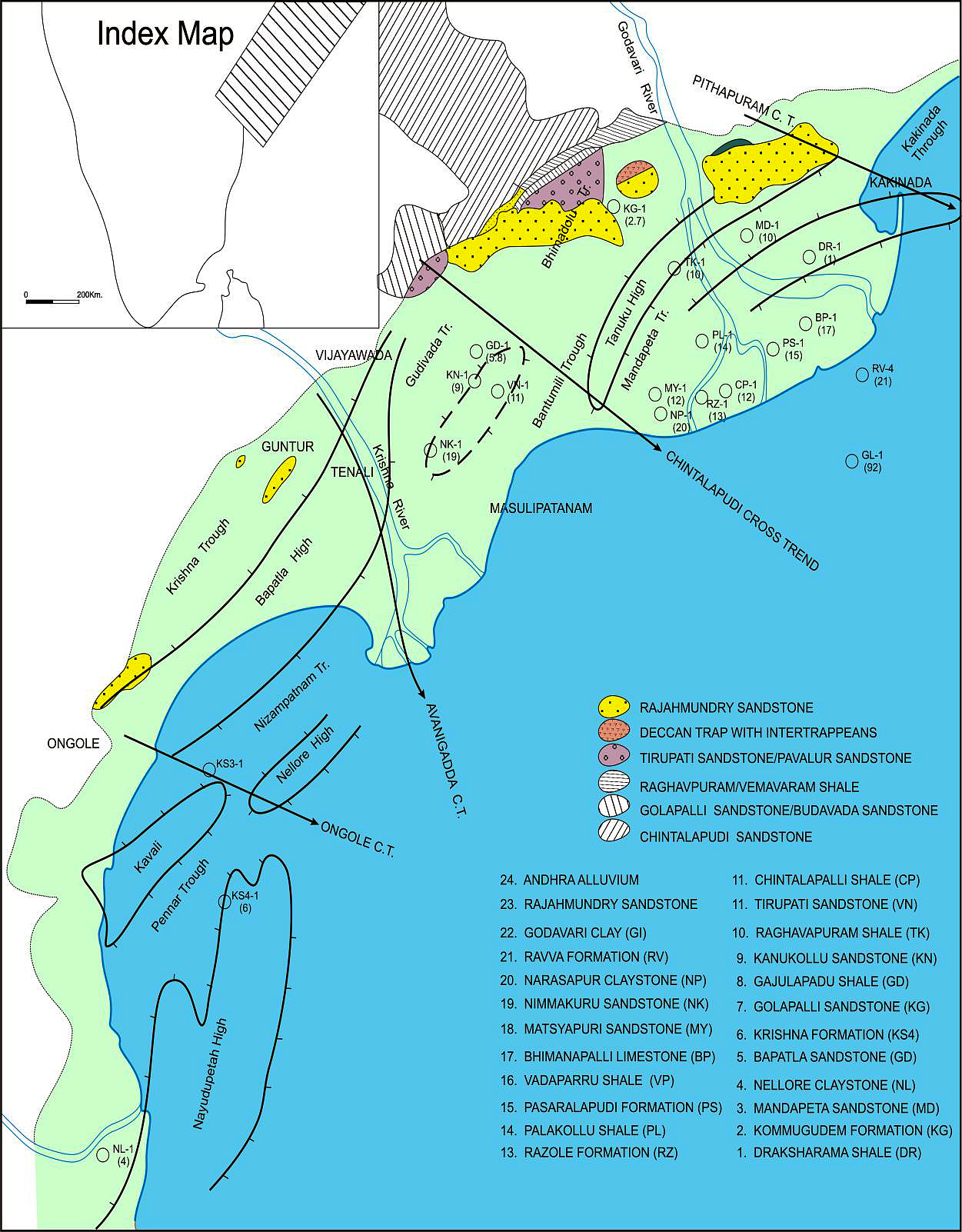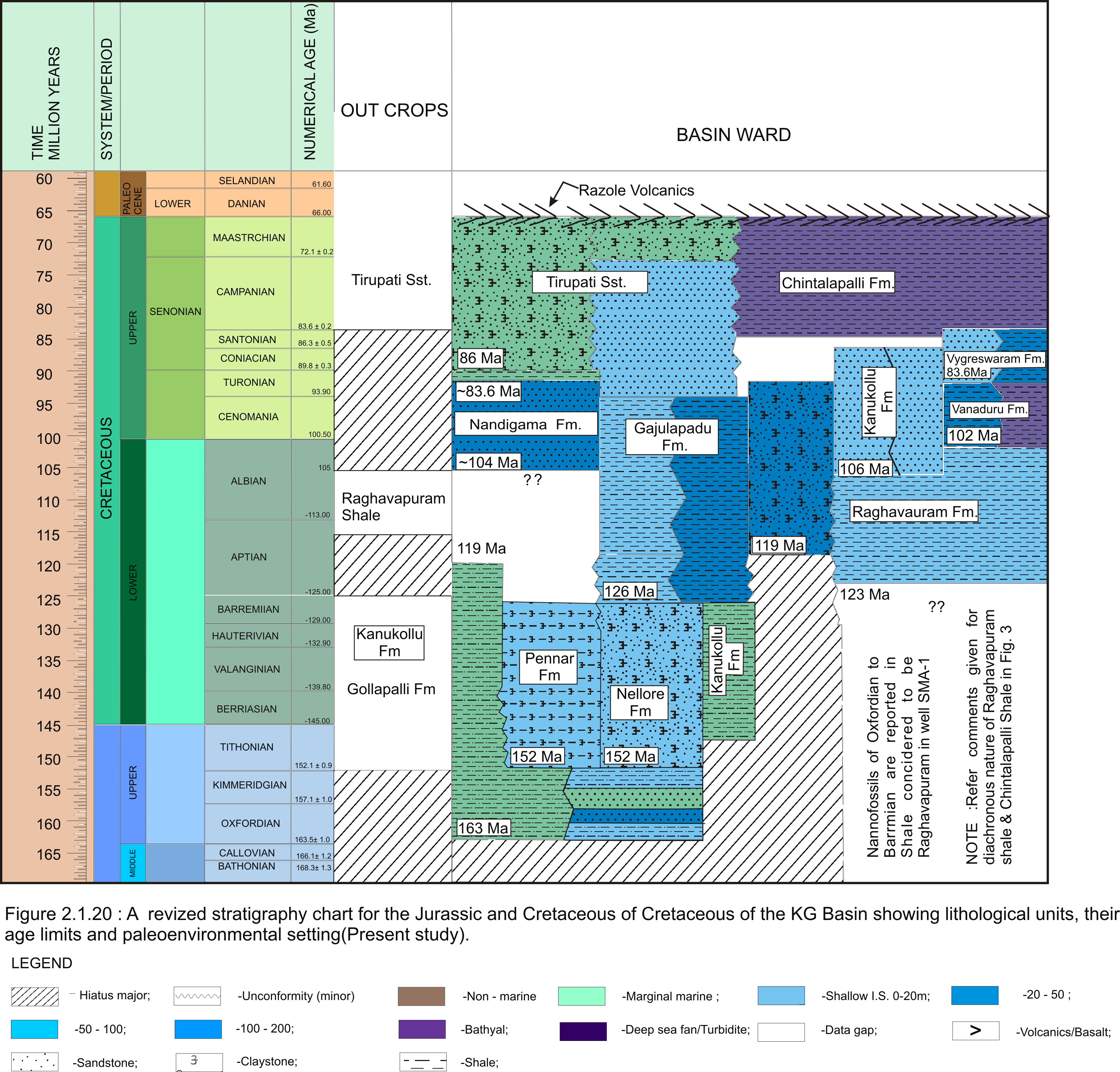Gajulapadu Fm
Type Locality and Naming
BASINAL: The type section is located at exploratory well Gajulapadu-A (depth interval: 2290-2680m), in the Gudivada graben. The hypostratotype is not defined. It was named after the Gajulapadu village by ONGC team steered by Venkatarengan et al. (1993) and issued as Document-VII by KDMIPE, ONGC, Dehradun (1993). [Original Publication: Venkatarengan, R., Rao, G.N., Prabhakar, K.N., Singh, D.N., Awasthi, A.K., Reddy, P.K. and Palakshi, K. (1993) Lithostratigraphy of Petroliferous Basins, Document VIII, Krishna-Godavari Basin, KDMIPE, ONGC Publication, pp.1-29.]. Reference well: Not defined.
Synonyms: Gajulapadu Shale (landward); Gajulapadu Sandstone (basinal)
[Figure: Map showing the locations of designated holostratotype section for the formation in the KG Basin (After ONGC, Pandey and Dave, 1998) in Raju et al., 2021, ONGC Bulletin, Special Issue, Vol. 56, No. 2]
Lithology and Thickness
Sandy claystone. Predominantly an argillaceous unit with intercalations of minor sandstone. Its thickness varies from 390m.
[Figure: Lithology, GR, Resistivity and planktic foram datums of the holostratotype of the Gajulapadu Formation in the Well Gajulapadu-A (modified after well completion report, ONGC)]
[Figure: A revised stratigraphy chart for the Jurassic and Cretaceous of the KG Basin showing lithological units, their age limits and paleoenvironmental setting (present study) in Raju et al., 2021, ONGC Bulletin, Special Issue, Vol. 56, No. 2]
Relationships and Distribution
Lower contact
Conformable with the Gollapalli Fm. [Although Dr. Raju's chart indicates next lower unit is either the Raghavapuram Fm or the Krishna Fm.
Upper contact
Conformable with the Kanukollu Fm.
Regional extent
This formation occurs in the Gudivada graben of West Godavari sub-basin.
GeoJSON
Fossils
Planktic foraminifera-Hedbergella planispira and agglutinated benthic foraminifera.
Age
Depositional setting
Middle neritic
[Figure: Revised age and paleoenvironments/paleobathymetry of formations of Jurassic-Cretaceous succession in KG Basin in Raju et al., 2021, ONGC Bulletin, Special Issue, Vol. 56, No. 2]
Additional Information


